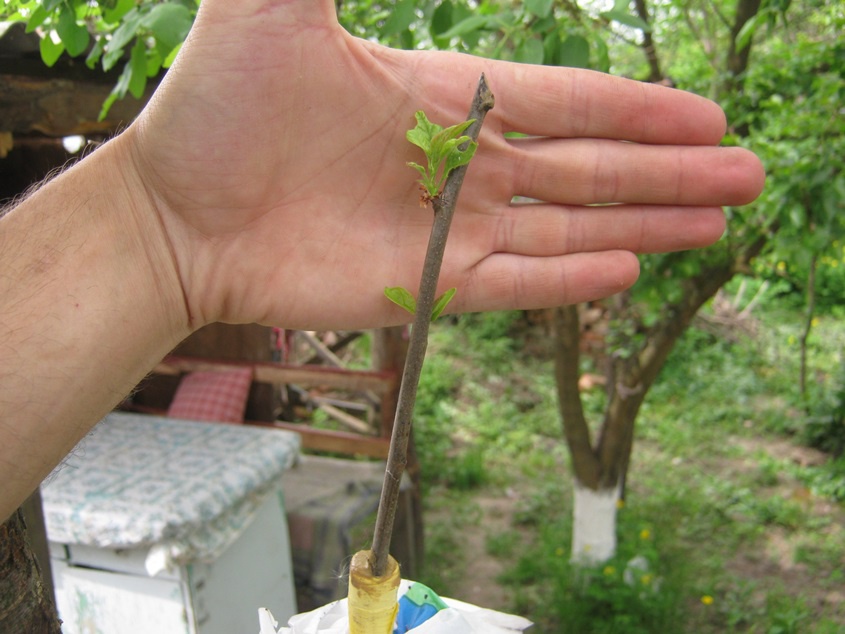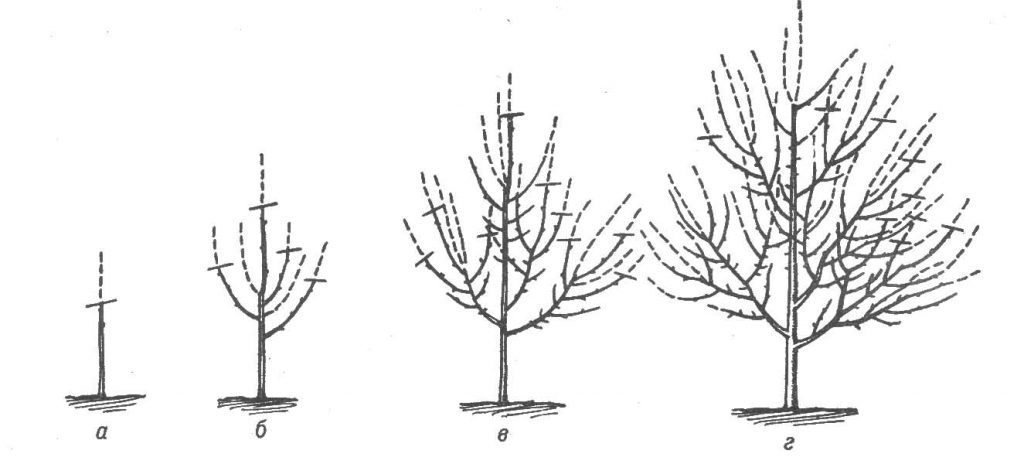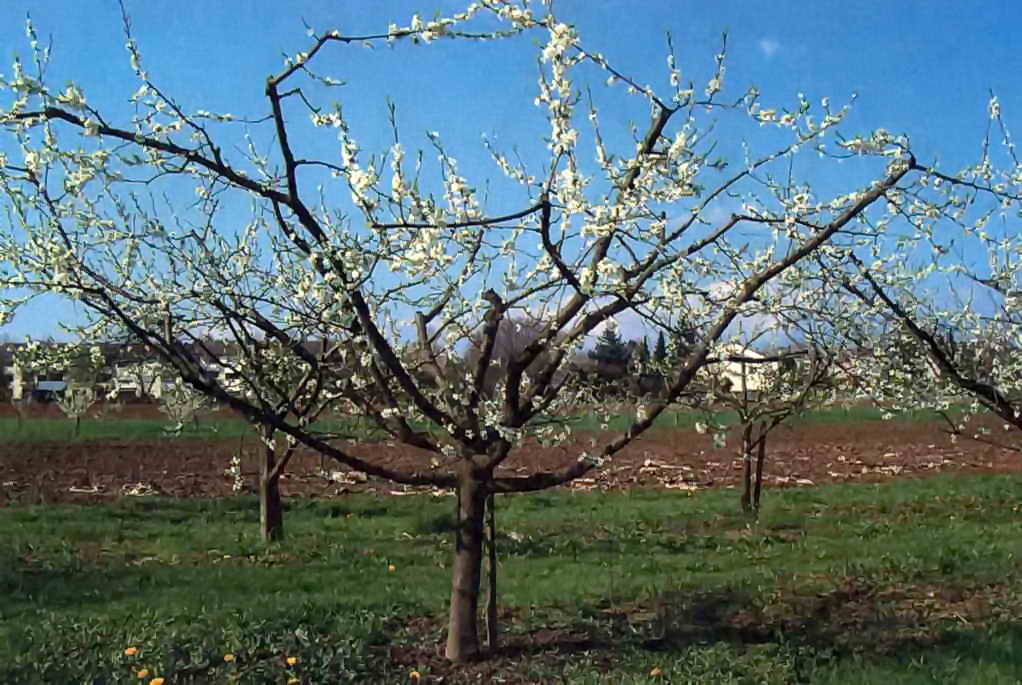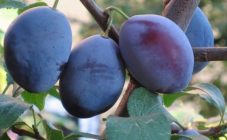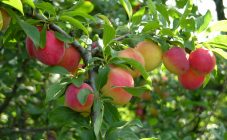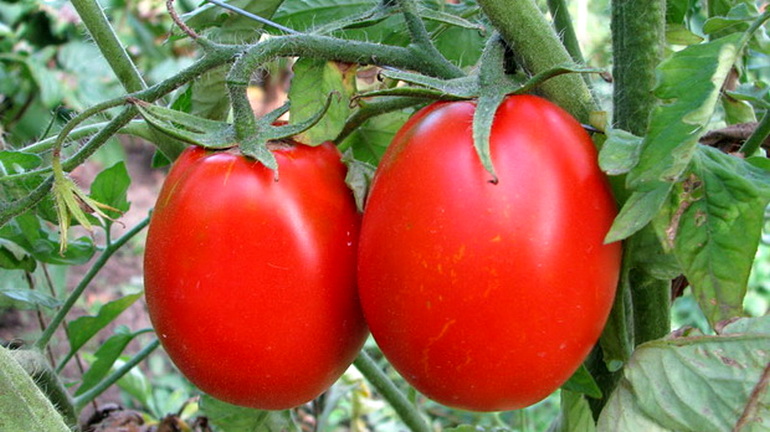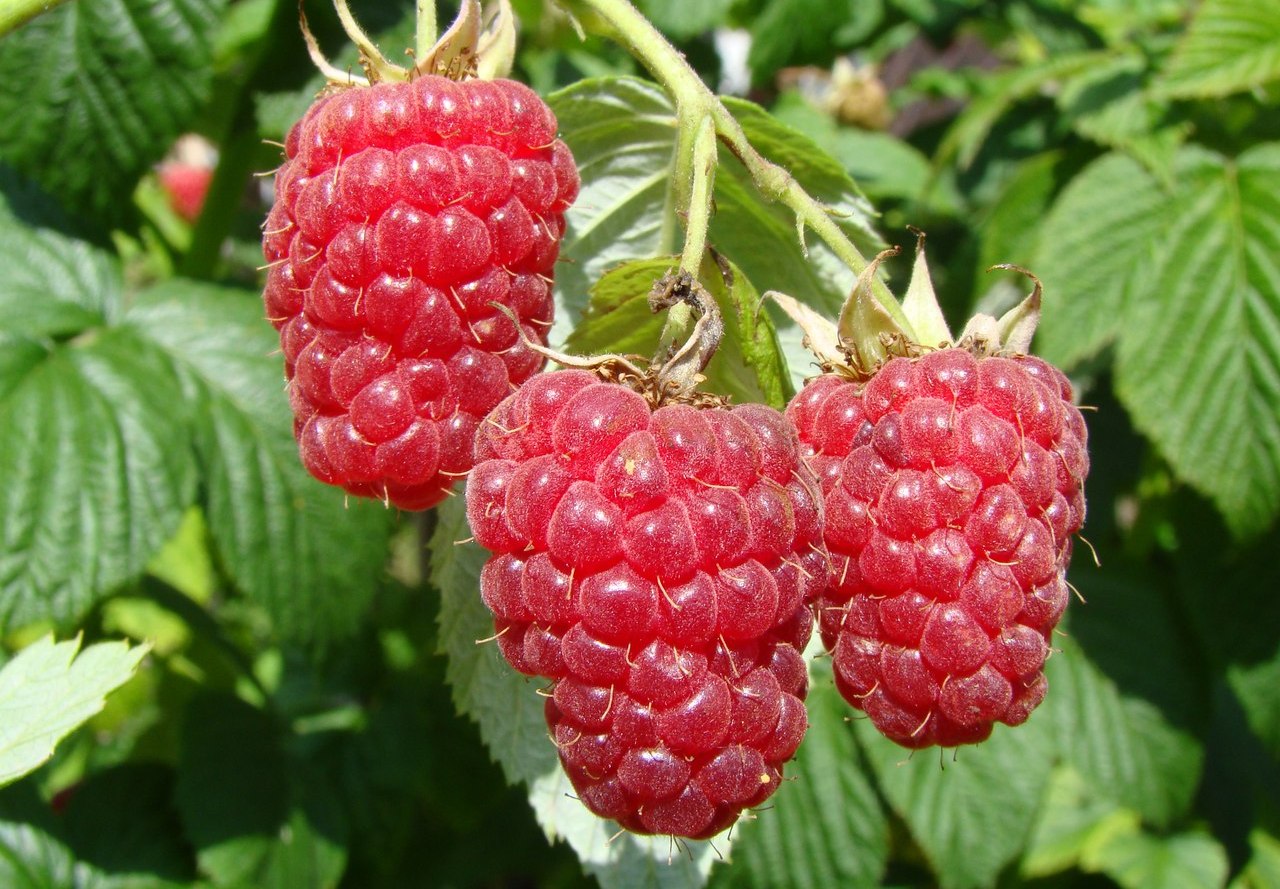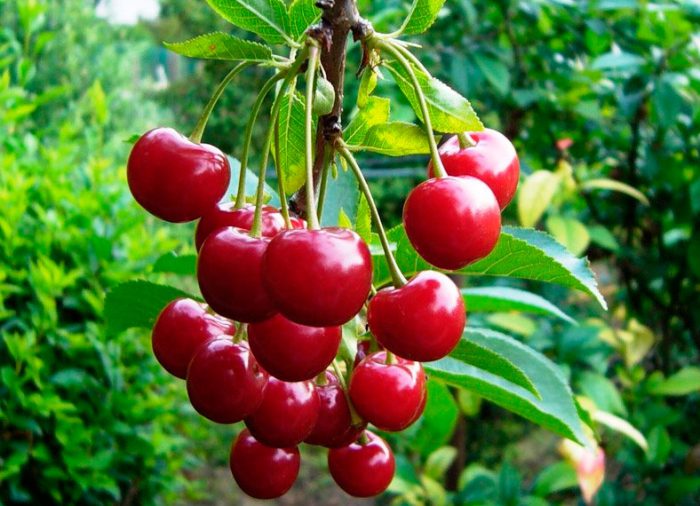Content:
Plum - one of the trees that can be found on any personal plot and in the country. It is perfectly adapted to different regions, compact and easy to maintain. If you wish, you can grow it yourself or buy it in the nursery.
Reproduction by layering
Forcing a sapling is the most effective method of getting a sapling quickly in the garden. You can give the cuttings to receive nutrition from the mother's roots, without separating it for 2 years. During this time, he has his own roots, good enough for independent growth. This method has its advantages - there is no need to control external conditions. Subject to agricultural practices and with proper care, plum trees will begin to bear fruit 4-5 years after planting in a permanent place.
Growing cuttings
Obtaining seedlings from cuttings is a longer process than propagation by layering, including rooting cuttings, observing the conditions for obtaining the first branches and leaves, transplanting into the ground and following the rules of agricultural technology. The timing of flowering and fruiting largely depends on the conditions in which the tree will grow after planting in a permanent place, and on proper care for it.
Growing from seeds
The gardeners borrowed the technology of growing seedlings from seeds from nature, planting a stone of their favorite plum in the ground. A plant grown from a stone is much more resistant to climatic conditions in comparison with one that is grafted even on a strong cherry plum stock. Fruiting begins in 6-7 years from the moment the seed is planted in the ground. The acceleration of flowering and fruiting times can be done when the seedling has at least 3-4 skeletal branches.
Plum seedlings from nursery
Ready-made seedlings of a zoned variety can be purchased at the nursery, specifying when they begin to bear fruit. The tree may bloom, but not harvest. In this case, novice gardeners have questions: what influenced the fact that the plum blooms profusely, but does not bear fruit, and what to do?
One reason is the cross-pollinated plum variety, and there are no pollinators nearby. When buying a seedling, you need to clarify the type of pollination, if this variety is not self-pollinated, two or three varieties of this culture should grow in the garden.
Plum pollinators
| Variety | The best pollinators | ||
|---|---|---|---|
| Neman award | Venus, Crooman, Mont Royal | ||
| Honey yellow | Renklod Karbysheva, Hungarian Donetskaya | ||
| Mont Royal | Venus, Crooman, Delicate | ||
| Volat | Hungarian Belarusian, Stanley, Venus | ||
| White honey | Renklode or Hungarian Early | ||
| Venus | Delicate, Mont Royal | ||
| Hungarian Belarusian | Stanley, Bluefrey |
If there are no trees nearby for cross-pollination, you can fix the situation by grafting a different variety of plum to the tree branch. Many lovers do this to create an exotic look of a tree with branches of different varieties, but this takes time.
Flowering and fruiting timing factors
If the tree does not bloom after 4-5 years, you should think about how long to wait before the start of fruiting, what is being done wrong in caring for the tree, and what can be corrected. This applies to flowering and fruiting of all trees grown in different ways.
Planting and soil
The first factor, because of which you can not wait for the flowering and fruiting of the plum, is the wrong organization of the planting site. Plum trees should not grow near tall trees or buildings blocking sunlight. The plum tree loves a sunny place. The soil is important. It should not be heavy and sour. A plum cannot be made to bear fruit if it falls on such soil. You need to worry about the soil at the stage before planting the seedling. The hole is prepared for planting in advance, the soil in it must be alkaline, consisting of a substrate rich in lime and nutrients, and be able to store water, but without a tendency to waterlogging. A plum tree may not start forming an ovary after flowering if the soil has been heavily moistened or has not been watered for a long time.
Watering
After planting, the tree needs watering, but not regularly, but so that the soil is not overdried. It is better to do watering in the evening so that the moisture goes to the roots of the tree, and does not evaporate. If possible, it is advisable to use rainwater because it contains less lime than regular tap water. During this period, the roots are actively developing. A delay in the development of the root system entails a delay in the onset of fruiting. Plum needs watering during flower formation, at the initial stage of ovary formation and at the moment when the fruit is being poured.
Top dressing
For the first couple of years, the seedling may not be fed if it is planted on fertile soil. Lack of nutrition is one of the reasons for delayed fruiting and poor plum harvest. When the tree enters the fruiting period, additional feeding will be required, otherwise the tree will only have enough strength to bloom, but not to produce a crop. That is, by the way the plum blooms, it is impossible to conclude whether there will be a harvest after the first flowering.
Autumn dressings in the form of organic matter are important for the tree: compost and humus, and spring ones in the form of wood ash, which provides mineral fertilizer: phosphorus and calcium, in addition, alkalizes the soil.
Pruning
Correct pruning of a tree is a guarantee of obtaining a harvest in the second year after planting a seedling, ahead of the expected fruiting date. The two-year-old plum planted in spring gives growth of 70 cm by the summer. When the mass growth ends, you can start summer pruning from early June to mid-July. It is necessary to determine the center conductor. It should be the highest, the competitors are shortened, and the side branches should be lower than the shortened competitors of the center conductor. There may be competitors on the side lines too. They are shortened to a height of three buds.
All branches growing inside the tree must be cut. During summer pruning, you need to remove all vertically growing shoots, leaving horizontal ones on which flower buds are laid.Why are they removed? Because they take on their growth the forces that should go to the laying of fruit buds.
Each of the factors listed above contains the answer to the question that worries novice gardeners: why does the plum not bear fruit?
Weather
There are also reasons for not blooming, which are associated with weather conditions, they can be partially eliminated.
This is a temperature "swing", in which either the buds freeze out, or when the tree begins to bloom flowers, repeated frosts come. This causes great harm to gardeners in both northern and southern regions. You can save future crops by fumigating trees in the garden.
In addition to frost, persistent rainy weather during the plum blossom period can interfere with fertilization. In this case, it is impossible to help, since the pollen is sterilized, which means that there will be no harvest.
In calm weather, a self-pollinating plum can bloom, but not give ovaries. You can help the tree in this case. Spray the tree with a weak sugar solution to attract bees from a fairly large distance. This method of attracting bees has proven itself even for self-fertile trees. Bees acted as pollinators.
Pests and diseases
It is worse when pests grow in the garden, destroying the color, leaves and shoots. Their invasion nullifies the entire harvest. Elimination of aphids, sawflies and moths is possible with the use of insecticides. Fungal diseases like gray fruit rot and clotterosporia will also take away crops. Treatment consists in treating with fungicides and destroying the affected leaves, twigs and fruits.
How to speed up the onset of flowering and fruiting
With proper agricultural technology and tree care, you can try to speed up the onset of fruiting by using simple techniques. One of them is highlighted above in the "Cropping" section. The second is directing the vertical branches to a horizontal position. Gently tilt the plum branches down and tie them to the trellises, posts, pins. This is done so that the movement of sap in the branch goes down, and the tree is not engaged in forcing branches and foliage. As a result, fruit branches will form, on which the buds will bloom in the next season, and fruits will appear. The method is used for trees under 2 years old, when the branches are young and bendable.
You can speed up the fruiting period by tightening the branches at the base. This method can be applied to a tree that is over 3 years old and has 6-7 formed skeletal branches. On 3-4 branches, you can put sacking in several layers at the base and tie it with wire using pliers. The procedure is performed in the month of May and removed in July. From the transferred branch, the outflow of nutrients to the roots will significantly decrease, and flower buds will be laid on it. The next year, the buds will bloom, and under favorable weather conditions, fruiting will begin.
First harvest dates
Plums have different ripening periods, depending on which varieties they belong to and in which region they are grown.
In central Russia, in the Urals and in Siberia, the earliest varieties of plums are: July, Early Zarechnaya, Skoroplodnaya, Morning, Opal. The crop is harvested from late July to early August. In the southern and central regions of Russia, the early varieties of plums include Yakhontovaya, Smolinka, Supershearnyaya, and Prunes. Their fruits can be removed in July-August.
